Apple AirPods 3 vs Sony WF-1000XM4: which true wireless earbuds are best for you?
Here's how the Apple AirPods 3 stack up against the best true wireless earbuds
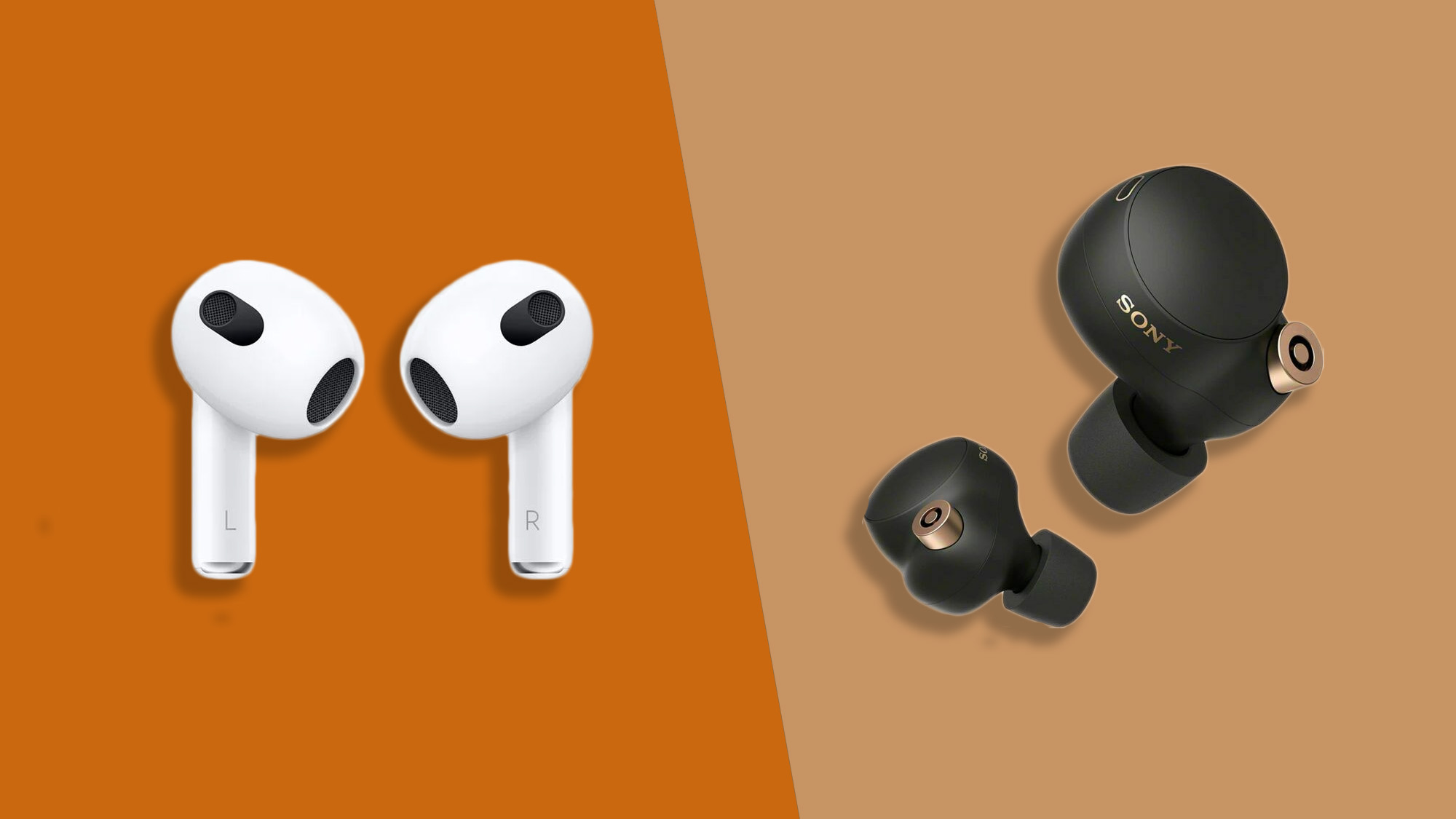
The Sony WF-1000XM4 Wireless Earbuds sit at the top of our best true wireless earbuds list, and we awarded them five out of five stars when we tested them.
But how do the crème de la crème of earbuds compare to the brand new Apple AirPods 3? In this guide, we'll put the Sony WF-1000XM4 Wireless Earbuds and the Apple AirPods 3 head-to-head.
As a quick refresher, Apple brought out the original AirPods in 2016 and the second-generation Apple AirPods in 2019 – think of those as Apple's entry-level true wireless earbuds.
The Apple AirPods Pro, a step up in terms of performance and price, also launched in 2019 and Apple’s first pair of high-end over-ear headphones, the AirPods Max, arrived later in 2020.
Ever since the second-generation Apple AirPods landed, there’s been speculation about when a new set of true wireless earbuds will arrive. Now we know they’re the Apple AirPods 3, which were announced in October 2021 and are available to buy now.
These true wireless earbuds are a big improvement on the 2019 AirPods, with support for immersive Spatial Audio, an IPX4 water resistance rating, new drivers, an improved design and much more. In our testing, we awarded them four out of five stars.
Back in 2020, when we pitted the Apple AirPods Pro against the Sony WF-1000XM3 we settled on the Sony WF-1000XM3 Wireless Earbuds – although it was an extremely close call. Will the newest offerings from Apple and Sony fare the same? Read on to find out whether the AirPods 3 or the Sony WF-1000XM4 are the best wireless earbuds you can buy today.
Get daily insight, inspiration and deals in your inbox
Sign up for breaking news, reviews, opinion, top tech deals, and more.
- Read our full AirPods 3 review
- Or, check out our Sony WF-1000XM4 review

Apple AirPods 3 vs Sony WF-1000XM4: price
The Apple AirPods 3 cost $179 / £169 / AU$279. That’s significantly cheaper than the Apple AirPods Pro, which will set you back $249 / £249 / AU$399. However, the AirPods 3 don’t offer noise cancellation – and that’s what sets them apart from Apple’s higher-end Pro offering.
The AirPods 3 are more similar in price to the 2019 AirPods (which have now been given a permanent price cut). When they launched, they cost $159 / £159 / AU$249 (with the standard charging case), and $199 / £199 / AU$319 with the Wireless Charging Case.
As the AirPods 3 come with the wireless charging case as standard, they’re actually a little cheaper than their predecessors. In any case, we were glad to see that Apple has stuck with a similar price point for the third-generation AirPods, rather than making them much pricier.
In comparison, the Sony WF-1000XM4 are considerably more expensive at $279.99 / £250 / AU$449.95. However, they offer more advanced features and are priced similarly to the best earbuds you can buy today from brands like Bose, Grado and Sennheiser.
Apple AirPods 3 vs Sony WF-1000XM4: design
The Apple AirPods 3 look similar to the previous generation of AirPods, but there are some differences; for instance, they have an IPX4 water resistance rating, making them suitable for use while working out.
What’s more, the stems of the AirPods 3 are a little shorter, and the housing is more softly contoured, which gives them a streamlined look more in keeping with the AirPods Pro than the second-gen AirPods.
Unlike the AirPods Pro, there are no interchangeable ear tips on offer. Instead, they have the semi-open design of the second-gen AirPods. Great for those who don’t like earbuds pushed into their ear canals, not so great for those who want a better audio experience and a snug fit – sound isolation isn’t the best, and there’s some sound leakage, too.
At 4.28g each, the AirPods 3 are lightweight and comfortable to wear. But although they didn’t fall out during a jog, we wouldn’t bet on them for more strenuous exercise.

The Sony WF-1000XM4 aren’t the smallest earbuds you can buy – although they’re, thankfully, smaller than the XM3s – which means they aren’t discrete, but they are fairly understated with a plain design and small gold embellishment.
We found the Sony WF-1000XM4 a little fiddly to insert during testing and felt they should fit more deeply in the ear than they do, but they are mostly comfortable and easy to wear.
Whether you prefer the Apple AirPods 3 or the Sony WF-1000XM4 in terms of design is a question that’s down to personal preference. Do you prefer an open fit or a closed fit?
The stems of the AirPods have also become a popular design feature over the years, so even though they’re smaller on the AirPods 3, you’re still getting the Apple ‘look’. Then again, if you want a more understated design, the Sony WF-1000XM4 will look the part whether you’re at home, the office or the gym.
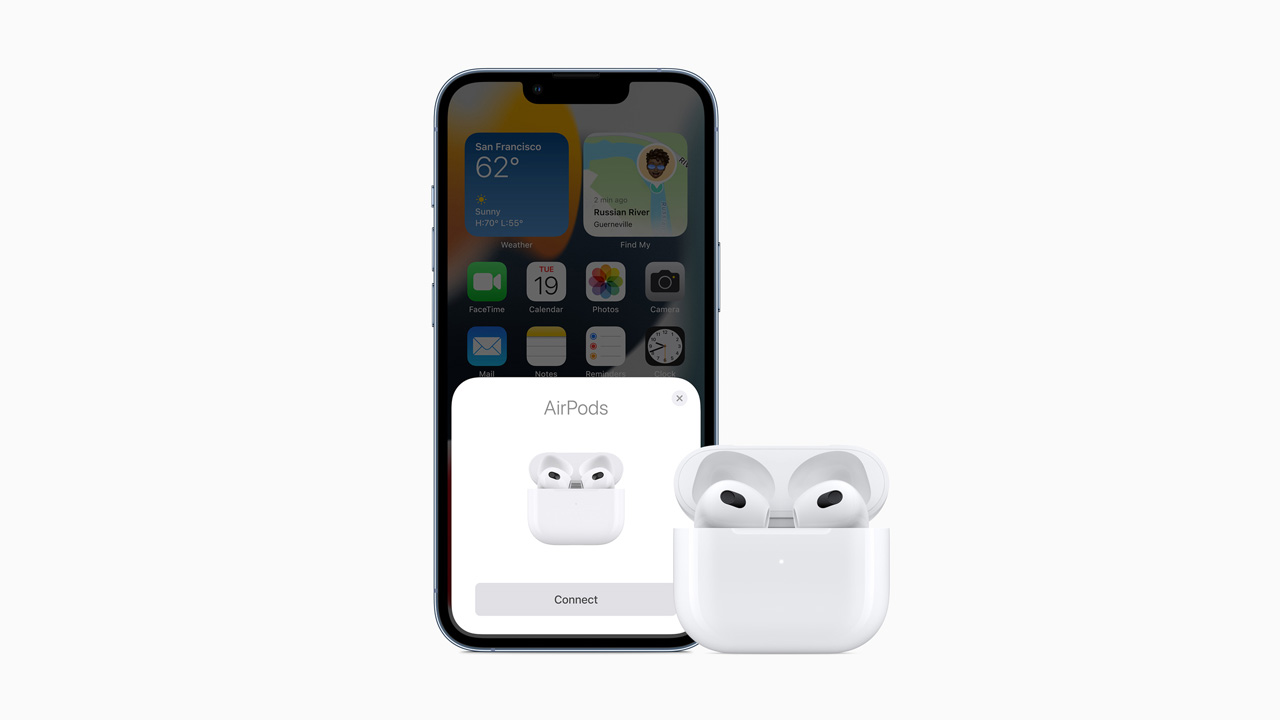
Apple AirPods 3 vs Sony WF-1000XM4: battery life
The Apple AirPods 3 offer a 30-hour maximum battery life. They also come with a wireless charging case (that's MagSafe-compatible). If you're in a hurry, a quick five-minute charge will give you about an hour of playback.
The onboard battery life is around six hours, but that drops to five hours if you have Spatial Audio enabled. That’s a bit disappointing – or at least not a big improvement over the second-gen AirPods.
In comparison, the Sony WF-1000XM4 bring you eight to 12 hours of on-board battery life and 24 hours in total with the case. Like the AirPods 3, they’re Qi charging pad-compatible, and five minutes plugged into an outlet will deliver another hour of playback.
The Sony WF-1000XM4 beat the AirPods 3 in terms of battery life, but whether that’s a dealbreaker for you will depend on where and how you’ll be using your new earbuds.
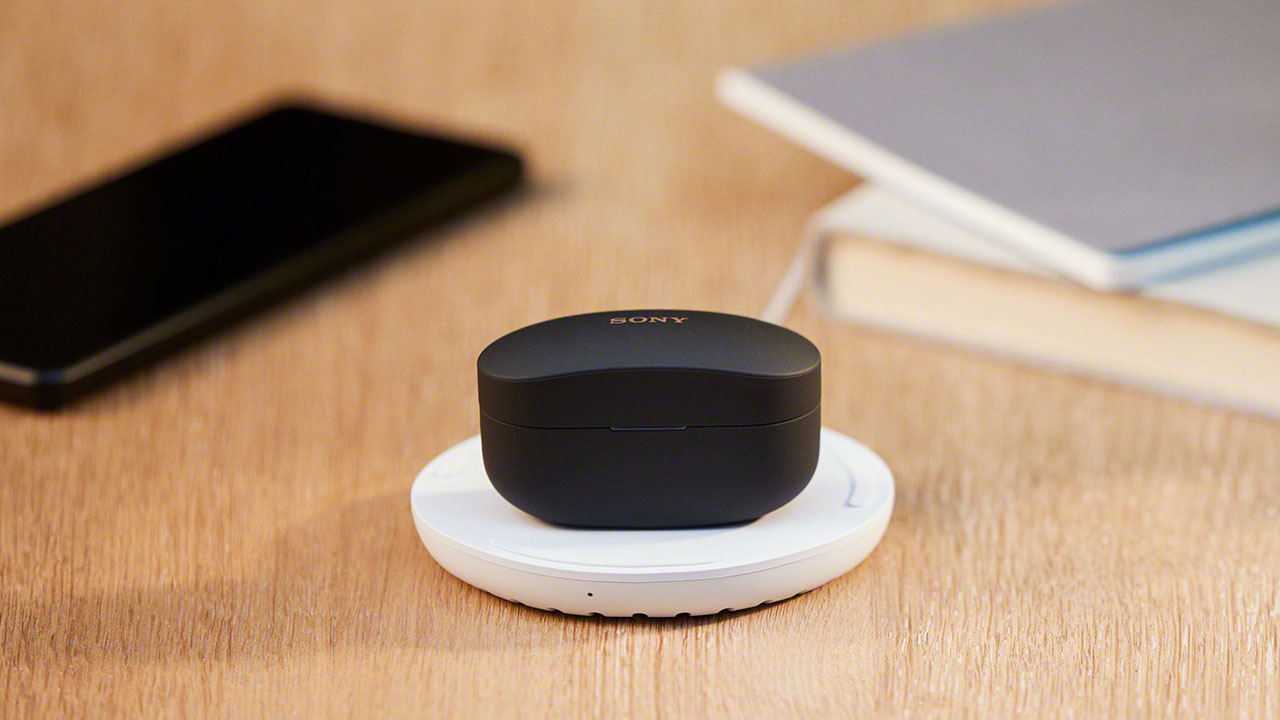
Apple AirPods 3 vs Sony WF-1000XM4: sound quality
The Apple AirPods 3 don’t offer noise cancellation - that’s the job of the AirPods Pro for now. However, we were impressed with the sound quality of these buds generally. The AirPods 3 come with new custom-made, low-distortion drivers and high dynamic range amplifiers, and although these aren’t audiophile in-ear headphones, they’re a perfectly enjoyable listen for music, podcasts, audiobooks and calls.
They also offer Spatial Audio Support, placing sound in a 3D sphere around you to create a more immersive experience. However, with support for only the SBC and AAC codecs, you won’t be able to enjoy hi-res audio with the AirPods 3.
They also offer a bunch of additional features, like Audio Sharing, Announce Notifications, and integration with the Find My network, which all make the AirPods 3 a good option for use with an iPhone – but less appealing for anyone with an Android.
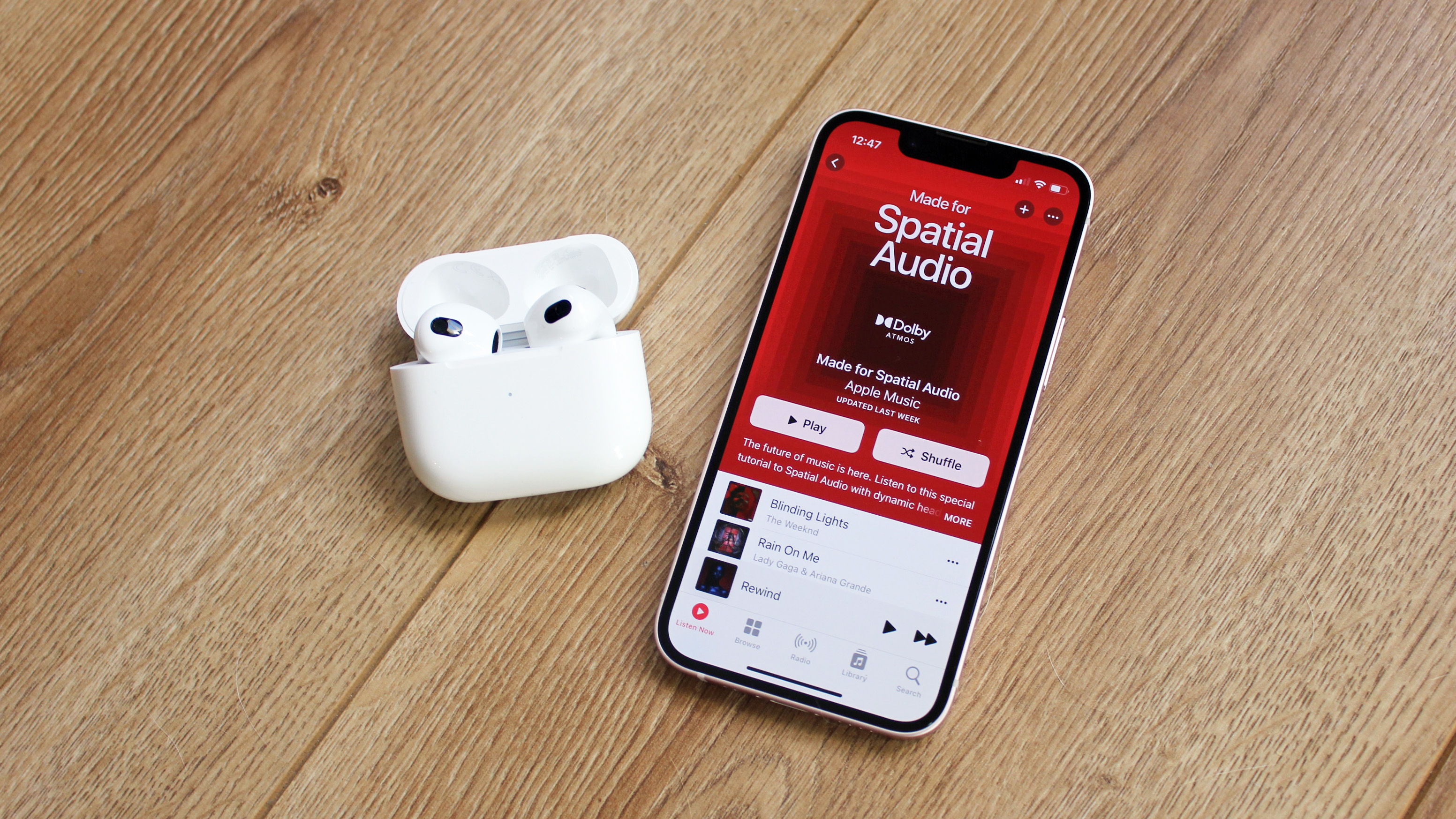
Similarly, the XM4s are packed full of features, many of which we’ve seen from Sony’s over-ears, including Speak-To-Chat, DSEE Extreme audio upscaling – designed to extract high-resolution sound from standard-definition digital audio files – and adaptive noise cancellation.
The Sony earbuds also support hi-res audio playback, thanks to the company’s bespoke LDAC codec – although aptX support is missing here. As for spatial audio? The WF-1000XM4 have their own solution in the form of Sony’s 360 Reality Audio, which requires a compatible music streaming service like Amazon Music HD or Deezer.
We think you’d be hard-pressed to find a more comprehensively-specced pair of wireless earbuds. If you’re looking for good sound quality and a wide range of features, you can’t beat the Sony WF-1000XM4 in this particular showdown. But those with lots of Apple products might prefer the decent sound and additional features of the AirPods 3.
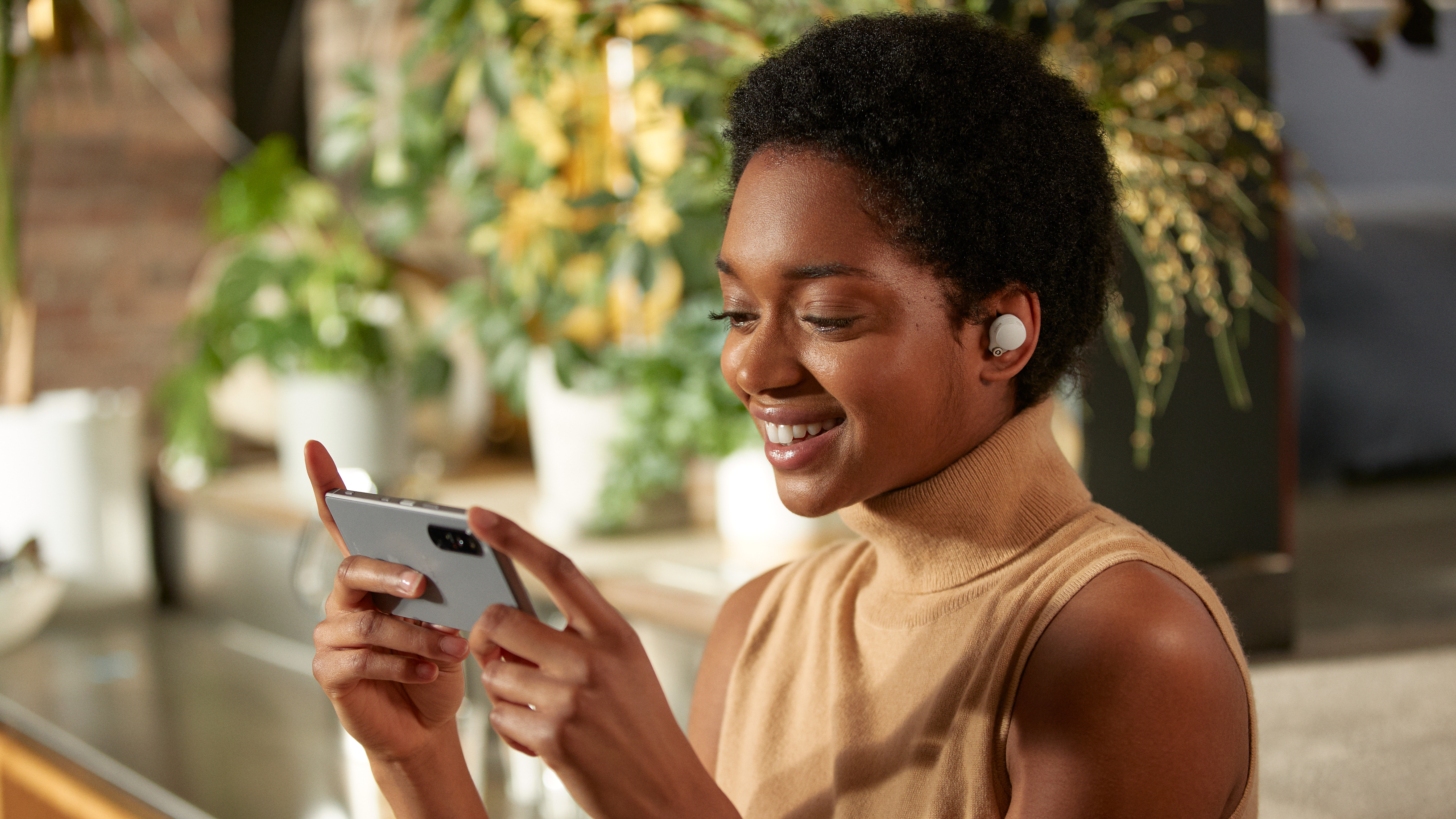
Takeaway
The Sony WF-1000XM4s might be our favorite true wireless earbuds right now, but this was a close call.
The Sony WF-1000XM4s are still the best all-rounders and superior in terms of audio quality and noise cancellation. Their design is also more suited to anyone looking for an understated pair of earbuds and isn’t fussed about the AirPods look (or is trying to actively avoid it).
But they are more expensive than Apple’s latest earbuds, which means they might not be the right option for you. Instead, the Apple AirPods 3 are the better choice if you have an iPhone – pairing the buds with an iPhone 13 mini was as easy as opening the wireless charging case and tapping the prompt that appeared on our screen.
What’s more, there’s hands-free Hey Siri activation, Announce Notifications, Audio Sharing, and Group Facetime with Spatial Audio. These are appealing if you’re already bought into the Apple ecosystem but useless if you’re not invested in Apple’s line of smartphones, laptops, tablets and smartwatches.
We also recommend them if you’re happy to sacrifice noise cancellation for Spatial Audio and solid sound quality rather than the best of the best. Design-wise, they’ve got the stems that are everywhere these days, but we do love the slighter shorter design, which gives the AirPods a touch more elegance.
Yes, one of the biggest disadvantages of the Apple AirPods 3 is they don’t have ANC and the Sony WF-1000XM4 do. However, the noise-cancelling of the XM4s isn’t the absolute best you’ll find, which means if you’re looking for exceptional noise-cancelling and an audiophile-grade experience, neither option will be right for you. Instead, you should look to noise-cancelling earbuds like the Bose QuietComfort Earbuds or over-ear headphones like the Sony WH-1000XM4.
- Trying to block out the world? Read our guide to the best noise-cancelling headphones you can buy today
Becca is a contributor to TechRadar, a freelance journalist and author. She’s been writing about consumer tech and popular science for more than ten years, covering all kinds of topics, including why robots have eyes and whether we’ll experience the overview effect one day. She’s particularly interested in VR/AR, wearables, digital health, space tech and chatting to experts and academics about the future. She’s contributed to TechRadar, T3, Wired, New Scientist, The Guardian, Inverse and many more. Her first book, Screen Time, came out in January 2021 with Bonnier Books. She loves science-fiction, brutalist architecture, and spending too much time floating through space in virtual reality.
